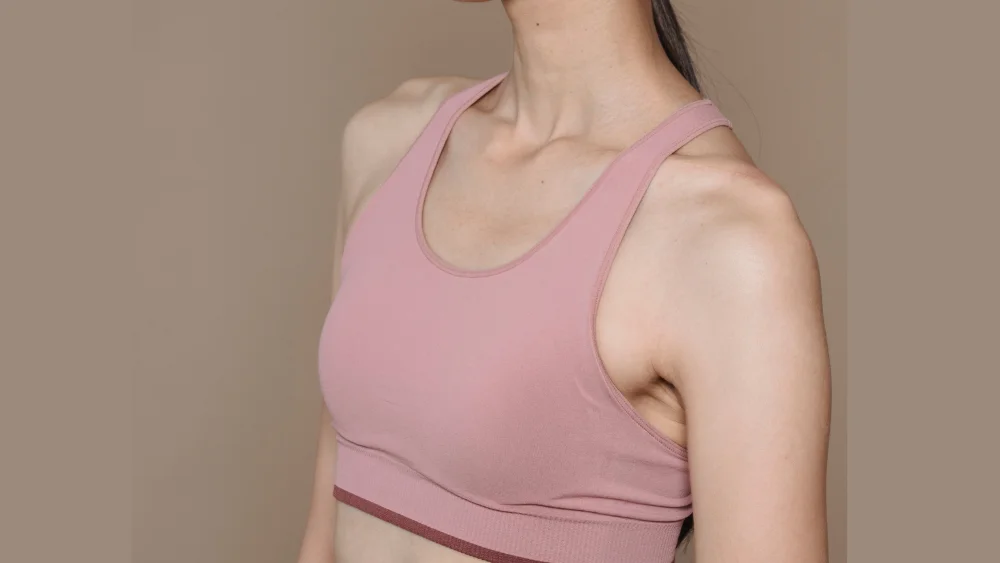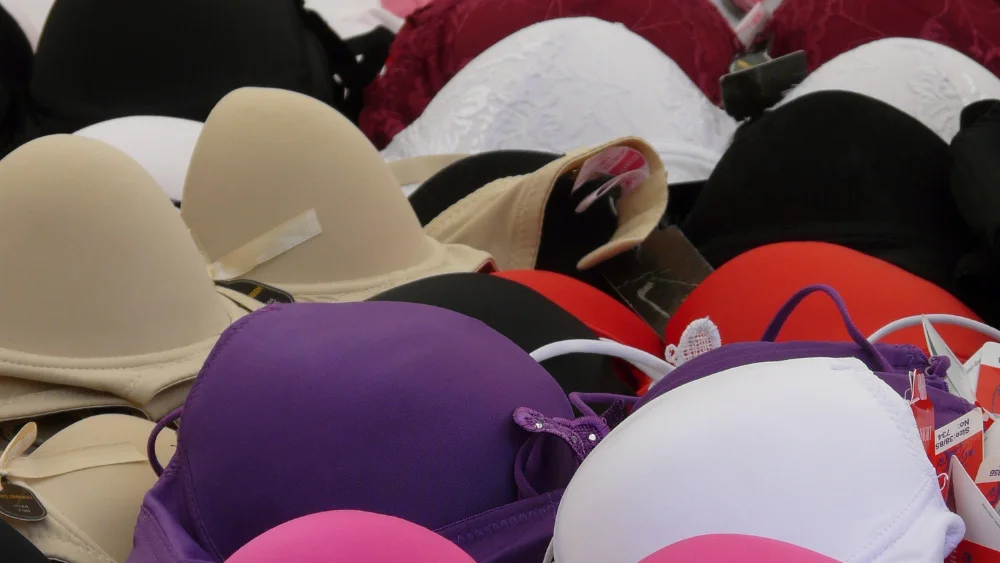Lingerie MOQ is a key factor in shaping a brand’s growth strategy. By meeting MOQ requirements, brands can reduce costs, enhance customization options, and establish strong partnerships with manufacturers, paving the way for competitive pricing and market expansion.
Table of Contents
The Key Role of Lingerie MOQ in the Industry
In the lingerie industry, the Minimum Order Quantity (MOQ) is not just a cold, hard number; it embodies the brand’s initial vision and dreams. Every new brand faces numerous challenges, and the MOQ is often one of the most formidable obstacles. For a newly launched lingerie brand, the MOQ can feel like a towering mountain, pressing down so heavily that it’s almost suffocating. Manufacturers set MOQ requirements based on production costs, batch efficiency, and operational requirements, which means that for entrepreneurs, it often translates to a large upfront financial commitment. Especially when a brand is small and the market has not yet been fully tapped, failing to meet the MOQ can lead to supply chain instability and potentially miss the opportunity to collaborate with quality manufacturers.
However, the impact of MOQ goes far beyond this. Not meeting the MOQ means losing negotiating power with manufacturers, which could lead to higher unit prices, fewer customization options, and the risk of delayed deliveries. These challenges not only affect a brand’s financial situation but can also damage its reputation, potentially stalling market expansion. If handled poorly, the lingerie MOQ can become the greatest bottleneck in a brand’s growth process, hindering its progress. For small brands still in the market-testing phase, the existence of MOQ can pose a significant test of their potential.
Therefore, understanding the deeper logic behind the MOQ and how to navigate it flexibly within its framework has become a crucial lesson for any brand striving for success.
Background and Significance of Lingerie MOQ

The Definition of MOQ and Its Application in the Lingerie Industry
MOQ (Minimum Order Quantity) refers to the minimum quantity set by a manufacturer when accepting an order. In the lingerie industry, MOQs are often determined by factors such as the complexity of the design, production processes, materials used, and the scale of production batches. Almost every lingerie brand’s relationship with manufacturers revolves around this concept. It serves as a key tool for manufacturers to ensure the efficiency of their production lines and cost-effectiveness, while also being the means for brands to acquire quality products at an appropriate price.
The Significance of MOQ for Manufacturers: Ensuring Production Efficiency and Profitability
For manufacturers, setting an MOQ is a necessary step to maintain production balance and profitability. First, MOQ helps manufacturers better distribute production costs, avoiding the waste caused by idle raw material purchases and production equipment when dealing with small batch orders. Furthermore, large volume orders allow manufacturers to benefit from economies of scale, reducing the unit production cost. For many lingerie manufacturers, a higher MOQ ensures that their production lines run efficiently while maintaining profitability for each order. Simply put,MOQ helps manufacturers maximize benefits with limited production resources.
The Significance of MOQ for Buyers: Accessing Better Prices and Customization Options
From the buyer’s perspective, meeting the MOQ requirements typically means acquiring products at more competitive prices. In most cases, buyers who meet the MOQ will enjoy a lower unit price, as large-scale production often offers greater discount opportunities. This is especially important for brands looking to control costs and increase product margins. Additionally, meeting the MOQ often means more customization options, such as flexibility in design and fabric choices, which helps brands present more unique products in the market.
However, while the MOQ offers buyers price benefits and more customization options, it can pose a significant challenge for start-ups or small businesses. Especially when funds are limited, a high MOQ might force a brand to face financial pressure or even miss the opportunity to collaborate with high-quality manufacturers.
The Struggles of Small Brands: Limited Funds and Resources
For newly established lingerie brands, the MOQ often presents a significant challenge. Many small brands face severe financial and resource constraints. Startups usually don’t have the capital to support large-scale production, meaning that meeting a high MOQ can put the brand under financial strain. Worse, failing to meet the MOQ might result in missing out on opportunities to work with well-known manufacturers, affecting the brand’s quality, customization options, and the timely delivery of products.
Additionally, emerging brands have not yet perfected their sales channels, and their consumer base and market awareness are still relatively weak. This makes it difficult for the brand to quickly absorb the large orders that come with high MOQs. In contrast, big brands typically balance production costs through well-established sales channels and a broad customer base, enabling them to easily meet higher MOQs. Small brands, however, need more refined strategies to overcome this challenge.
The Difference Between Large and Small Brands: Market Access and Opportunities
The difference between large and small brands in terms of MOQ is not just about order volume; it reflects the opportunities each brand has to enter the market. Big brands, with their powerful market influence and customer base, can often secure better negotiating power with manufacturers, sometimes even enjoying more flexible MOQ terms. On the other hand, small brands, due to their limited market share, purchasing power, and sales security, tend to be at a disadvantage during MOQ negotiations and cannot enjoy the price advantages or customization options available to larger brands.
This disparity means that emerging brands might miss out on potential collaborations, which can significantly impact their long-term development. Therefore, small brands must carefully plan their relationships with manufacturers and strategically navigate the MOQ challenges to find the right production solutions, in order to establish themselves in a highly competitive market.
How to Overcome the Challenges of Lingerie MOQ

Negotiation Skills: Adjusting the Lingerie MOQ with Manufacturers
One of the most direct ways for a brand to respond to the challenge of MOQ is through effective negotiation with manufacturers, aiming for a lower MOQ or more flexible production arrangements. Establishing a good relationship with manufacturers, understanding their production bottlenecks and areas of flexibility, can help a brand secure better conditions. During negotiations, a brand might consider offering a higher unit price in exchange for a lower MOQ or extending the delivery timeline to provide the manufacturer with more time to produce. This strategy can provide more production flexibility and customization options without significantly increasing costs. Through clear and mutually beneficial communication, a brand can potentially break through the limitations of the lingerie MOQ and secure better cooperation terms.
Joint Purchasing: Collaborating with Other Brands to Meet the MOQ
If a brand’s own demand does not meet the MOQ, one solution could be to collaborate with other brands for joint purchasing. In this way, smaller brands can join forces to achieve a higher order volume, thus meeting the manufacturer’s MOQ requirements. Joint purchasing not only helps distribute procurement costs but also allows for more competitive pricing through collective orders. For each brand, this collaborative model reduces financial pressure and ensures production quality and timely delivery. When choosing collaboration partners, it’s beneficial to seek out brands with similar market positioning and product needs, collectively agreeing on the MOQ to achieve mutual benefits.
Small-Batch Production: Testing the Market and Managing Risks
For emerging brands, small-batch production offers another solution worth exploring. Many manufacturers provide small-batch production services, which, although at a higher unit cost, offer important opportunities for market testing. Small-batch production allows a brand to test market reactions with lower risk, verifying product popularity and consumer demand. This strategy not only reduces the risk of inventory overstock but also helps brands adjust product design and marketing strategies based on market feedback, gradually finding the most suitable production and sales rhythm. Small-batch production provides greater flexibility for brands, avoiding the need for large investments and risks at the outset.
The Benefits of Meeting Lingerie MOQ and Brand Development

Cost Efficiency: Lowering Unit Costs and Enhancing Brand Price Competitiveness
For a lingerie brand, meeting the MOQ is not just about fulfilling production requirements, but also a strategic move to enhance the brand’s competitiveness. By meeting the MOQ, a brand can enjoy the economic benefits of large-scale production, which helps reduce the unit production cost. This cost advantage makes the brand more competitive in pricing, especially in price-sensitive markets where a lower unit price can be a significant draw for consumers. As order volumes increase, manufacturers often provide bulk discounts, which not only help the brand save on procurement costs but also allow the brand to pass those savings on to the consumer in the form of more attractive market pricing, ultimately increasing market share. For a startup brand, meeting the MOQ early on allows them to position themselves more advantageously for future competition.
Quality Control: Ensuring Product Consistency and Stability Through Large-Scale Production
The establishment of MOQ is not only about balancing costs and quantities but also ensuring product quality consistency. In large-scale production, manufacturers can more reliably control every aspect of the production process, ensuring that the quality of the product remains stable. Compared to small-batch production, which may experience quality fluctuations, large-scale manufacturing allows for better standardization, reducing human error or production deviations. By producing in bulk, brands can ensure that every product meets the design and quality expectations, maintaining consistency in sizing, color matching, and fabric quality across all items. For a product category like lingerie, which requires fine-tuned production, the standardization and quality consistency that come with meeting the MOQ are essential for a brand’s long-term survival and growth.
Building Long-Term Partnerships: Strengthening Brand and Manufacturer Cooperation
Meeting the MOQ often helps build a deeper, long-term cooperation between the brand and the manufacturer. This is not just a one-off transaction, but a foundation for mutually beneficial opportunities in the future. When manufacturers see a brand’s orders as stable and meeting the required standards, they are more likely to offer favorable production terms, more customization options, and prioritized production schedules. This strong partnership is crucial for the brand’s ability to smoothly produce and customize new products in the future. Moreover, a stable production relationship also ensures that the brand will have more influence as it expands its product line, which drives the brand’s rapid growth in the market. Therefore, meeting the lingerie MOQ is not only a response to production requirements but also a gateway for the brand to enter broader markets and gain more opportunities.
Setting Reasonable Lingerie MOQ Targets, Adjusting Product Strategy, and Inventory Management
When faced with the constraints of lingerie MOQ, brands need to implement precise strategic planning to ensure steady growth within these limitations. First and foremost, setting reasonable MOQ targets is crucial. Brands must define a feasible MOQ standard based on their financial situation, market demand, and sales forecasts. This target should not blindly aim for excessively high quantities but should focus on balancing production costs, inventory management, and product sales. In this process, optimizing inventory management becomes key. Through refined inventory planning, brands can avoid stockpiling, reduce capital tied up in inventory, and ensure they can respond quickly when market demand surges.
Moreover, adjusting product strategies is another critical aspect of overcoming the challenges posed by MOQ. By analyzing market feedback, brands can focus on producing the most popular styles or features, while streamlining their product lines and concentrating resources to produce efficiently. This strategy allows brands to meet the MOQ while ensuring that each product maximizes market demand, reducing risk.
Flexibly Adjusting Production Methods to Enhance Market Responsiveness and Production Efficiency
Within the framework of MOQ, brands must flexibly adjust their production methods to improve market responsiveness and production efficiency. One effective approach is combining custom orders with standardized orders. In this strategy, brands can choose to produce basic styles (standardized orders) while also allowing customers to personalize their products. This not only helps brands quickly produce basic styles and maintain production efficiency but also adds value to the products when meeting specific market demands.
By using this flexible production approach, brands can quickly adapt their strategies to different market environments, improving production adaptability and efficiency. Whether meeting large-scale demand or offering personalized products, brands can ensure market share growth within the limitations of MOQ, while reducing inventory pressure and increasing profitability.
Conclusion: Turning Lingerie MOQ into an Opportunity for Brand Growth
Lingerie MOQ is not just an inevitable challenge in the development of lingerie brands; it is also a threshold that tests a brand’s strategic capabilities. For startups, facing high MOQ requirements can feel overwhelming, with concerns about cash flow and inventory control. However, it is crucial to recognize that MOQ is not merely a production hurdle; it holds the potential to create better opportunities for the brand.
Brands need to adopt a systematic strategy when faced with MOQ, transforming it into a driving force for brand growth. Through precise inventory management, flexible production methods, and thoughtful order planning, brands can not only reduce production costs but also improve market responsiveness and enhance supply chain flexibility. The lingerie MOQ thus becomes an opportunity, enabling brands to provide more customization options for customers while maintaining efficient production, which further strengthens the relationship between the brand and its consumers.
Therefore, rather than viewing lingerie MOQ as an obstacle, it should be seen as a significant driving force in the brand development process. With clear strategic thinking and flexible response measures, brands can not only overcome this bottleneck but also achieve broader market growth and a deeper brand impact.

